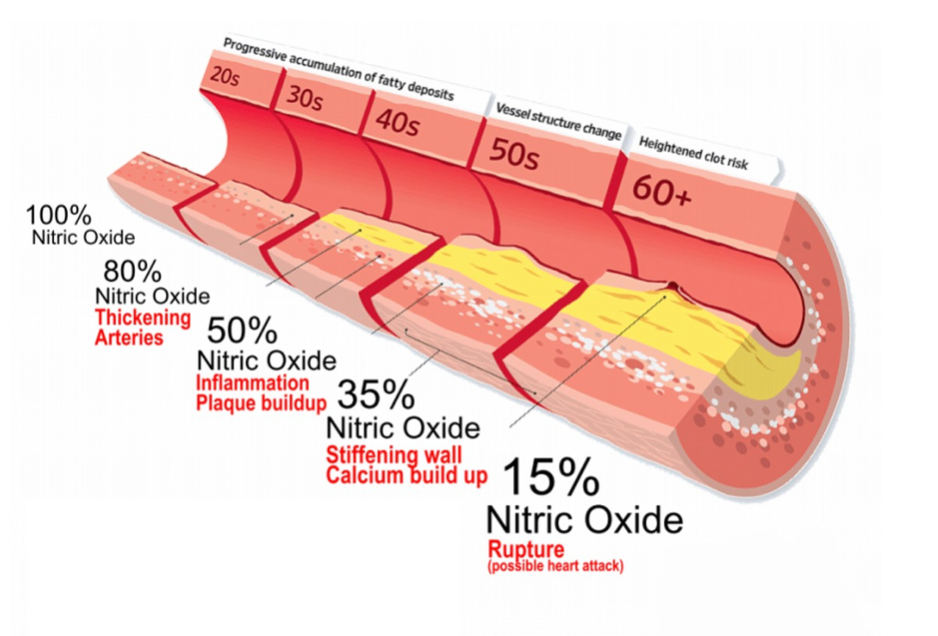What Causes a Heart Attack
- Jimmy Song
- Feb 18
- 3 min read
Heart attacks (“myocardial infarctions”) are a type of acute cardiovascular disease, and one of the world’s leading causes of death. Cardiovascular disease accounts for 20.5 million deaths per year globally, and heart attacks and coronary artery disease account for the largest proportion of those deaths.
While the term “heart attack” is familiar to most people, the actual biological processes that underlie it tend to still be shrouded in mystery, even though they are quite straightforward. It’s always “tragic” when someone passes away from a heart attack. But it should not be “unexpected”. We should be able to know long before a heart attack occurs that risk is growing, as the technology to monitor it exists today.
Generally speaking, heart attacks occur when there is a buildup of cholesterol-based plaque in at least one of the three major coronary arteries – Left Anterior Descending, Left Circumflex and/or the Right Coronary Artery. Of course, blockages can occur in one of the other minor coronary arteries, but typically it also occurs in at least one of these. The job of these arteries is to supply blood to the heart muscles ("myocardium") that contract, or pump, the heart. This pumping action pushes deoxygenated blood into the lungs, and pulls oxygenated blood from the lungs and pushes it out into the rest of the body.
When these coronary arteries get partially or fully blocked due to plaque buildup, they can struggle to deliver the oxygen-rich blood that the heart muscles need to keep pumping. When starved of oxygen, these heart muscles lose some of their electrical impulses and struggle to contract. In the case of an acute event or full blockage, this can lead to a heart attack. When it plays out over a longer period of time due to a partial blockage, this can lead to arrhythmias and ultimately to heart failure.

In the case of a heart attack, the longer the heart muscles are starved of oxygen without blood flow being properly restored, the more its muscle cells die and the higher the probability of death. Thus, it is a race against time to restore blood flow back to the heart muscles so they can continue pumping blood throughout the rest of the body.
In the case of full blockage of a coronary artery or multiple arteries, if blood flow is not restored within a few minutes, permanent brain damage can occur. If blood flow is not restored within 10 minutes, typically cardiac arrest and death occurs. Survival rates are as high as 90%, according to the Cleveland Clinic, if blood flow is restored within the first few minutes of a heart attack occurring. After that, survival rates drop by about 10% with each passing minute.
Even when a person survives a heart attack, typically they experience some amount of permanent heart muscle damage. This weakening of the heart can cause chronic fatigue, shortness of breath, light-headedness and dizziness. And once a heart attack occurs, the probability of a second heart attack is relatively high, especially within the first 90 days of release from the hospital. The probability of survival of a second heart attack within 5 years of the first heart attack is only about 50%. This is why prevention to avoid a first heart attack is key, and continuous monitoring after a heart attack is critical.
Aside from the physiological damage caused by a heart attack, what’s even more concerning is the psychological damage caused by a heart attack – namely the constant anxiety and loss of trust in one’s body. Because heart attacks typically happen so unexpectedly, there is an ongoing fear that it could happen again without warning. That constant anxiety can become a self-fulfilling prophecy, keeping blood pressure perpetually elevated, thereby increasing the risk of another heart attack.
This is why being able to track arterial health is so critical: first, as a means to prevent an initial heart attack; and second, as means to continuously monitor one’s cardiovascular health in order to avoid another heart attack.



Comments